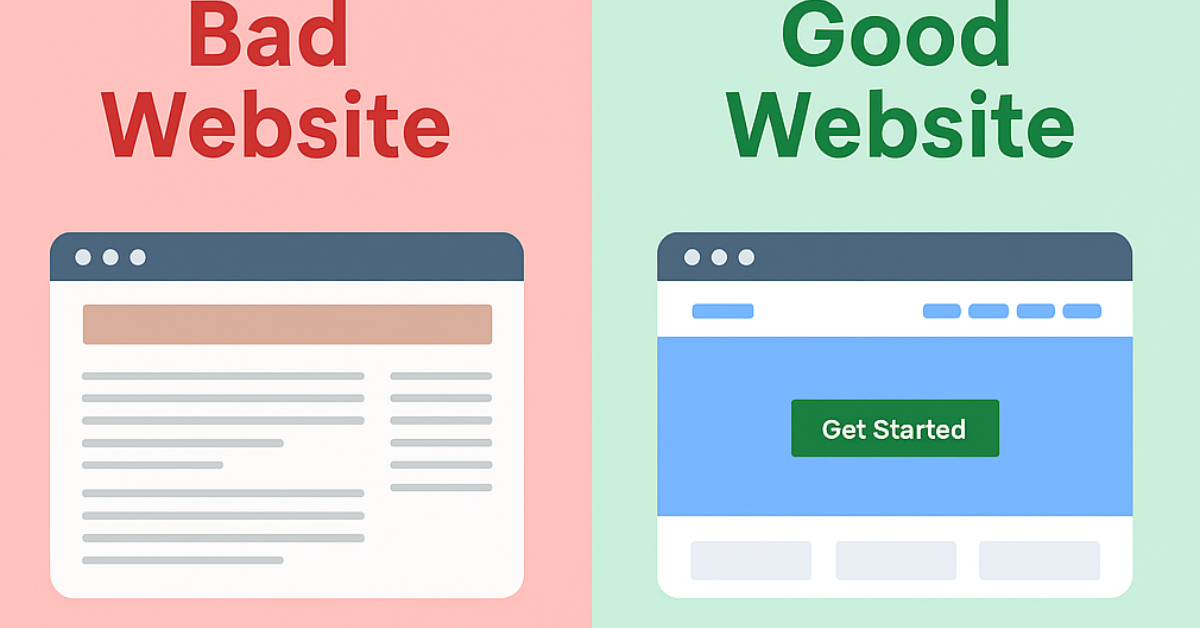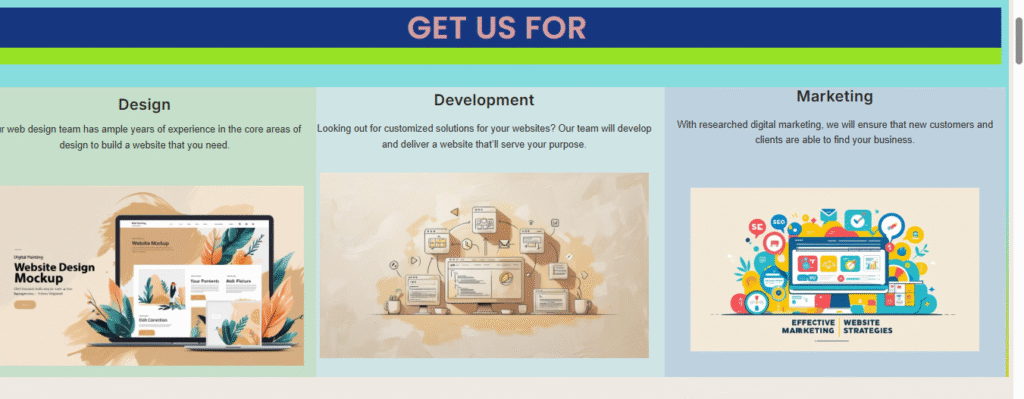Table of Contents
Introduction
Web design is the backbone of a healthy website. 75% of users judge a business’s credibility based on its website. Good web design matters much for each and every businesses particularly small business. Why?— because it creates first impressions, builds trust and credibility with customers, and enhances user experience to guide visitors toward a desired action.. A well-designed website improves online visibility, which attracts new customers and helps small businesses effectively compete with larger companies. It also increases conversions, boosts brand recall, and ensures a mobile-friendly experience, ultimately driving sales and supporting overall business growth. We at SKTrading guide small business owners grow their establishment with smart website.

What is web design:
Defination
Web design revolves around creating the look, feel, and easy navigation process of a website to satisfy customer’s expectation. It involves planning the site’s structure, designing the user interface (UI) with appealing visuals like colors and fonts, and ensuring a positive user experience (UX) that makes the site distinguished and easy to use. Effective web design attempt to create a compelling online presence that motivate users
Difference between web design and web development
Web design focuses on the aesthetics, layout, and user experience of a website, while web development focuses on the coding and programming that makes the website function. Designers create the visual interface using tools like Figma, while developers build the website’s structure and functionality using languages like HTML, CSS, and JavaScript.
Importance of user experience (UX) and user interface (UI)
The importance of User Experience (UX) and User Interface (UI) lies in their ability to drive business success by creating intuitive, functional, and enjoyable digital products that meet user needs and foster loyalty. Good UX and UI increase customer satisfaction and engagement, leading to higher conversion rates and sales, a significant competitive advantage in crowded markets

Key Elements of a Successful Website
Layout & Structure (clean, easy navigation)
A good website layout and structure usesintutive, organised navigationwith clear sections like a header, main content, and footer, making it easy for users to find informations and complete actions. Key principles include a clean, simple design with sufficient white spsces, consistent branding,
Common Layout Elements:
- Header
- The topmost section of a page, typically containing the website’s logo, site name, and primary navigation
- Navigation Menu:
- Main Content (Body):
- Footer:
- Sidebar:
Types of Layouts
Key Principles of Website Layouts
- Grid System:
- Content Hierarchy:
- Whitespace (Negative Space):
- User Experience:
- Responsiveness:
Visual Design (colors, typography, branding)
Websites that contain high-quality, impactful images have a 47% higher click-through rate compared to those that don’t.
Typography
Typography is more than just selecting a font; it’s about conveying the right tone, readability, and hierarchy. Here are some considerations:
– Font Selection: Choose fonts that align with your brand identity.
– Legibility: Ensure that your font size and spacing allow for easy reading.
– Hierarchy: Use font weights, sizes, and styles to guide the reader’s eye.- Font Selection: Choose fonts that align with your brand identity.
– Legibility: Ensure that your font size and spacing allow for easy reading.
2. Color:
Color psychology influences emotions and perceptions. Consider the following:
– Brand Consistency: Use colors consistent with your brand palette..
– Emotional Impact: Different colors evoke distinct feelings.
– Contrast: High contrast between text and background enhances readability.
Content Strategy (clear messaging, SEO-friendly)
A content strategy is a roadmap that guides the planning, creation, distribution, management, and measurement of content to achieve specific business and marketing goals
Key Components of a Content Strategy
- Goals & Objectives:
Define what you want to achieve, such as increasing brand awareness, generating leads, or improving customer satisfaction.
- Target Audience:
Identify the specific people you want to reach with your content, understanding their needs and interests.
- Brand Identity:
Determine your brand’s mission, values, voice, and tone to ensure consistent messaging across all content.
- Content Pillars & Themes:
Establish the core topics and subjects that your content will cover, aligning with your audience’s needs and your business goals.
- Content Creation & Production:
Plan the types of content to create (e.g., blog posts, videos, infographics) and the process for developing them.
Establish the core topics and subjects that your content will cover, aligning with your audience’s needs and your business goals.
- Content Creation & Production:
Plan the types of content to create (e.g., blog posts, videos, infographics) and the process for developing them.
Responsiveness (mobile-friendly design)
With most people browsing on mobile devices, a responsive and mobile-friendly website is essential for retaining visitors and driving sales
Speed & Performance
Page speed is one of the most important elements of web design. According to Google Insights, if a page doesn’t load in three seconds or less, users will most likely abandon your website and you will miss a possible conversion. Afast website improves user experience, increases SEO rankings and decreases the bouncerate. This can be done by running a speed test or using tool GTmetrix.

Common Web Design Mistakes to Avoid
- Cluttered layout
- Slow-loading pages
- Poor mobile experience
- Inconsistent branding
- Ignoring SEO fundamentals
FAQ
-
1. How much does a new website cost?
The cost of a new website can range from $500 to $30,000 or more, depending on factors like design complexity, functionality, and whether you use a freelancer or an agency.
-
2. Do you only create WordPress websites?
No, I provide SEO advice for various platforms, not just WordPress.
-
3. Will you maintain my site for me?
No, I do not provide maintenance services for websites.
-
4. Will my website be mobile-friendly?

To determine if your website is mobile-friendly, use Google’s Mobile-Friendly Test tool: https://search.google.com/test/mobile-friendly. Enter your website URL, and it will analyze and provide feedback on its mobile usability.
-
5. What if I need help on my site down the road?
Consider reaching out to a professional SEO agency or consultant for ongoing support and guidance tailored to your site’s needs.
-
6.How does a smartly designed help to grow business or help marketing bost order position
A smartly designed website enhances user experience, improves navigation, boosts engagement, increases conversion rates, and strengthens brand credibility, all of which contribute to higher search engine rankings and ultimately drive business growth.
conclusion
A website made with proper web design is more than just a digital presence—it’s a powerful tool to attract, engage, and convert visitors into loyal customers. From clean layouts and mobile responsiveness to fast performance and consistent branding, every detail shapes how people experience your business online. By focusing on user-friendly design and avoiding common mistakes, small businesses can compete with larger brands and build lasting trust. At SKTrading, we specialize in creating websites that look professional and perform effectively. Ready to upgrade your website? Contact us today and let’s build a site that grows your business.
Call-To-Action
Your website should work as hard as you do. With the right design, you can turn visitors into customers and build trust for your business. SKTrading is here to help you achieve that. Get in touch today and let’s start web design that truly delivers results.
Ready to Grow Your Business?
Don’t wait! Get a professional website and SEO service that drives results.
Contact Us Now